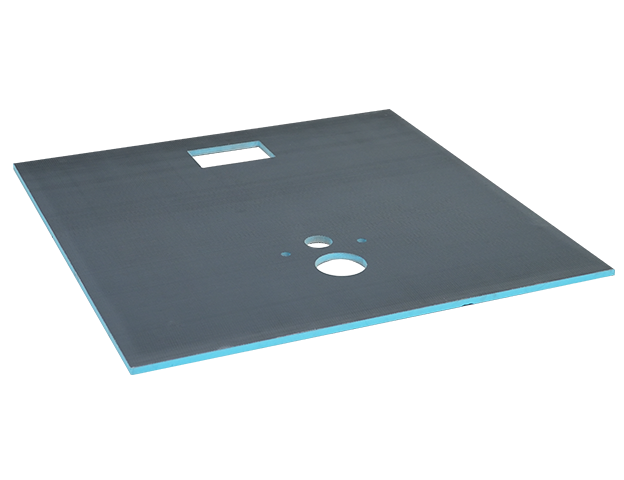
Tips for Choosing the Best Waterproof Backing Board Adhesive
Introduction
When it comes to construction, renovation, or tiling projects, selecting the right waterproof backing board adhesive is crucial for ensuring durability, moisture resistance, and long-term performance. Backing boards are commonly used in wet areas such as bathrooms, kitchens, and showers to provide a stable surface for tiles or other finishes. However, without the proper adhesive, even the best backing board can fail, leading to water damage, mold growth, and structural issues.
This guide provides essential tips for choosing the best waterproof backing board adhesive, covering factors such as material compatibility, moisture resistance, application methods, and long-term performance.
1. Understand the Different Types of Waterproof Backing Boards
Before selecting an adhesive, it’s important to know the type of backing board you’re working with. Common waterproof backing boards include:
- Cement Board: A popular choice for wet areas due to its durability and moisture resistance.
- Foam Board: Lightweight and easy to install, often used in shower systems.
- Fiber Cement Board: Combines cement and cellulose fibers for added strength.
- Gypsum Board with Waterproof Coating: Used in some moisture-resistant applications but not fully waterproof.
Each type requires a specific adhesive to ensure proper bonding and waterproofing.
2. Choose an Adhesive Designed for Waterproof Applications
Not all adhesives are suitable for wet environments. Look for products labeled as:
- Waterproof – Ensures long-term resistance to moisture.
- Mold & Mildew Resistant – Prevents fungal growth in damp conditions.
- High-Bond Strength – Provides a secure hold even in humid or wet conditions.
Polyurethane-based and epoxy adhesives are often recommended for waterproof applications due to their strong bonding properties and resistance to water penetration.
3. Check Compatibility with Your Backing Board
Some adhesives work better with certain materials. For example:
- Cement Board Adhesives – Typically require a modified thinset mortar or a specialized adhesive.
- Foam Board Adhesives – Need a lightweight, non-sag formula to prevent board shifting.
- Fiber Cement Board Adhesives – Should be flexible to accommodate slight movement.
Always check the manufacturer’s recommendations to ensure compatibility.
4. Consider the Application Method
Different adhesives come in various forms, including:
- Pre-Mixed Adhesives – Convenient but may not be as strong as powder-based options.
- Powder-Based Thinset Mortar – Requires mixing but offers superior bond strength.
- Spray Adhesives – Quick application but may not be suitable for heavy-duty waterproofing.
Choose an adhesive that matches your skill level and project requirements.
5. Evaluate Drying and Curing Time
Some adhesives dry quickly, while others require extended curing times. Factors to consider:
- Fast-Setting Adhesives – Ideal for quick installations but may be less forgiving.
- Slow-Curing Adhesives – Allow more time for adjustments but delay tiling or finishing.
Ensure the adhesive fully cures before exposing it to moisture to prevent bond failure.
6. Look for Flexibility and Crack Resistance
In areas prone to movement (e.g., floors, walls with temperature fluctuations), a flexible adhesive helps prevent cracks. Features to look for:
- Elastomeric Properties – Allows slight movement without breaking the bond.
- Anti-Fracture Technology – Reduces the risk of cracks due to substrate shifts.
7. Verify Waterproofing Performance
A truly waterproof adhesive should:
- Pass ANSI A118.10 or Similar Standards – Indicates suitability for wet areas.
- Withstand Prolonged Water Exposure – Should not degrade or lose adhesion over time.
If possible, test the adhesive in a small area before full application.
8. Assess Ease of Application
Some adhesives require special tools or techniques. Consider:
- Spreadability – Should be easy to apply with a trowel.
- Non-Sag Formula – Important for vertical installations.
- Cleanup – Water-based adhesives are easier to clean than solvent-based ones.
9. Read Reviews and Seek Professional Advice
Customer reviews and expert recommendations can help identify reliable products. Look for:
- High Ratings for Moisture Resistance – Indicates real-world performance.
- Feedback from Similar Projects – Helps gauge suitability for your needs.
Consulting a contractor or tile specialist can also provide valuable insights.
10. Consider Environmental and Health Factors
Some adhesives contain volatile organic compounds (VOCs) or harsh chemicals. Opt for:
- Low-VOC or VOC-Free Adhesives – Better for indoor air quality.
- Non-Toxic Formulas – Safer for DIYers and homeowners.
Conclusion
Choosing the best waterproof backing board adhesive requires careful consideration of material compatibility, moisture resistance, application method, and long-term durability. By following these tips, you can ensure a strong, waterproof bond that will protect your project from moisture damage for years to come. Always follow manufacturer guidelines and, when in doubt, consult a professional for the best results.
Would you like additional details on specific adhesive brands or application techniques?








Leave your email address and we will send you the latest product information

Langfang Huaneng Building Materials Co., Ltd. was established on October 24, 1996. It is a subsidiary of Huaneng Zhongtian Energy Conservation Technology Group Co., Ltd.
Copyright © 2025 Langfang Huaneng Building Materials Co., Ltd. All rights reserved
이 웹사이트는 귀하가 당사 웹사이트에서 최상의 경험을 할 수 있도록 쿠키를 사용합니다.
논평
(0)